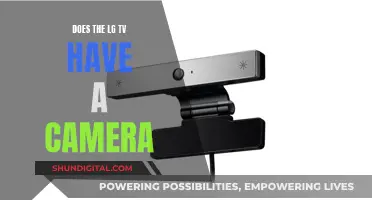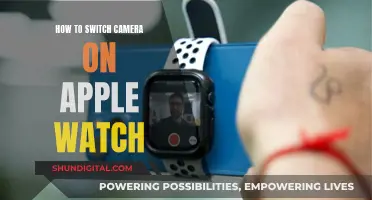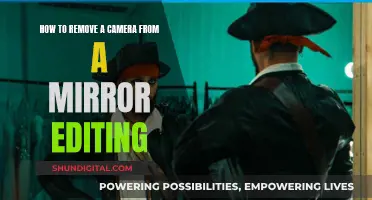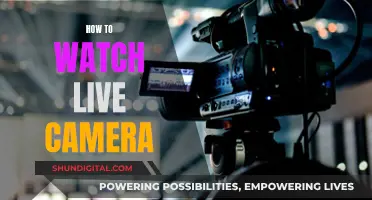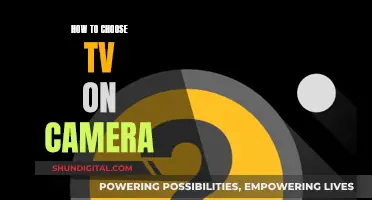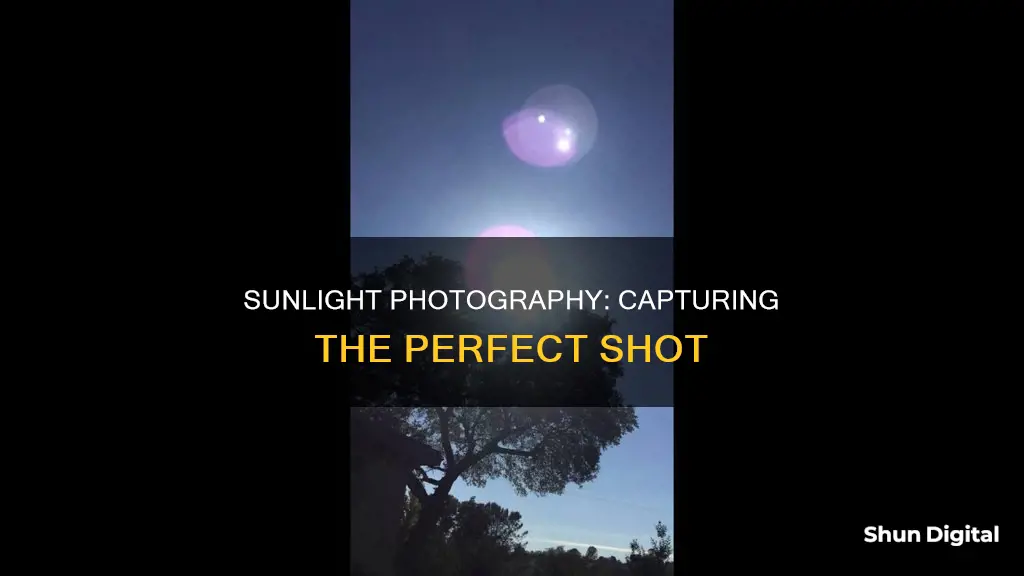
The sun is a notoriously difficult subject to photograph due to its extreme brightness and constant emissions of damaging ultraviolet and infrared radiation. However, with the right equipment, it can be a challenging and rewarding subject.
It is important to note that looking directly at the sun can cause permanent damage to your eyesight and even blindness. The same is true for cameras. Looking at the sun through a camera's viewfinder can damage not only your eyes but also the camera's optics and sensor.
When photographing the sun, it is crucial to use specialised gear, such as solar viewing glasses and a solar filter for your camera and lens. It is also recommended to use a tripod for added stability and to reduce vibrations.
While it may be tempting to experiment with different types of filters, it is essential to prioritise safety. Solar filters are designed to protect your eyes and equipment from non-visible IR and UV radiation, making them the safest option for solar photography.
In conclusion, while capturing the sun on camera can be a rewarding challenge, it is important to prioritise eye and equipment safety by using the appropriate protective gear and filters.
| Characteristics | Values |
|---|---|
| Can the sun damage the camera sensor? | Yes |
| Can the sun damage the camera shutter? | Yes |
| Can the sun damage the camera's AF sensors? | Yes |
| Can the sun damage your eyes? | Yes |
| Can the sun damage the camera's mirror? | Yes |
| Can the sun damage the camera's viewfinder? | Yes |
| Can the sun damage the camera's sensor when using Live View or an electronic viewfinder? | Yes |
| Can the sun damage the camera's sensor when using an optical viewfinder? | No |
| Can the sun damage the camera's sensor when using a mirrorless camera? | Yes |
| Can the sun damage the camera's sensor when using a DSLR? | No |
What You'll Learn

Looking at the sun through a camera can damage your eyes
Looking directly at the sun with your naked eyes is dangerous and can cause permanent damage to your eyesight and even blindness. The same applies to looking at the sun through a camera—it can be extremely harmful to your eyes.
The sun emits very high levels of UV and infrared radiation, as well as high levels of visible light. When looking at the sun through a camera, the light rays pass through the lens and camera directly to the photographer's eyes. The intensity and brightness of the sunlight are magnified by the optics, which can cause irreversible damage to your eyesight in a matter of seconds.
The damage to your vision can be as severe as total blindness and can occur without you feeling any pain. This is because there are no pain receptors in the retina. The effects of the damage may take several hours to manifest, and by then, it is often too late to do anything about it.
Therefore, it is crucial to take the necessary precautions when photographing the sun. Always use a certified solar viewing filter when viewing the sun through a camera, and avoid looking through the viewfinder of an unfiltered camera, even if it has a dark ND filter. Instead, use Live View mode or an electronic viewfinder. Additionally, protect your eyes by wearing certified solar viewing glasses.
New Chevy Trailers: Can Cameras See Through Them?
You may want to see also

Looking at a picture of the sun will not damage your eyes
However, looking directly at the sun with your eyes or through a camera lens can be extremely harmful. The sun emits damaging ultraviolet and infrared radiation, which can cause permanent damage to your eyesight and even blindness. When photographing the sun, it is crucial to use specialised gear, such as solar viewing glasses and certified solar filters for your camera and lens.
Knifing a TV: Cameras, Microphones, and Privacy
You may want to see also

Pointing a camera at the sun can damage the camera's sensor
Pointing a camera at the sun can indeed damage the camera's sensor. The sun's rays, when focused directly onto the sensor for a prolonged period, can cause damage. This is especially true during live view mode or when shooting video, where the sensor is continually exposed. However, modern cameras often come equipped with protective mechanisms to prevent this from happening. Additionally, typical photography practices like frequently changing your composition or only opening the shutter briefly further reduce the risk.
To avoid potential damage, it is recommended to use a lens hood to shield your lens from direct sunlight and to avoid keeping your camera in live view or video mode for extended periods while pointing it directly at the sun. It is also important to protect your eyes when photographing the sun and to use live view to avoid eye strain.
When shooting into the sun, you will likely encounter exposure-related issues and lens flare. To capture the sun's brightness while retaining details in the rest of the scene, you may need to experiment with exposure bracketing and aperture, play with lens flares, and use graduated neutral density filters to reduce the sunlight in your images.
In summary, while pointing your camera at the sun can potentially damage the sensor, taking appropriate precautions and using good judgment will greatly reduce the risk.
Big Brother Through Your Device's Camera?
You may want to see also

Pointing a camera at the sun can damage the camera's shutter
The risk of damage depends on various factors, including the camera type, lens focal length and aperture, duration of exposure, and atmospheric conditions. DSLRs, for example, operate in auto-aperture mode, where the aperture is wide open while framing a shot and only stops down during image capture. This means that even a brief exposure to direct sunlight can let in a significant amount of intense light. Older DSLRs with stop-down mode, which immediately adjusts the aperture according to the setting, may offer some protection but can still be harmful.
To minimise the risk of damage, it is recommended to avoid pointing the camera directly at the sun, especially for prolonged periods. If you wish to photograph the sun, specialised gear, such as certified solar filters, are necessary to protect your equipment and eyes. It is also advised not to look through the viewfinder of an unfiltered camera when it is pointed at or near the sun, as this can cause damage to your eyesight.
Cameras Watching You: What's the Right Term?
You may want to see also

Pointing a camera at the sun can damage the camera's lens
Pointing a camera at the sun can indeed damage the camera's lens. The sun emits very high levels of UV and infrared radiation as well as high levels of visible light. The sun is a notoriously poor photographic target due to its extreme brightness and constant emissions of damaging ultraviolet and infrared radiation.
The viewfinder of DSLRs uses a technology that allows image updates to occur at the speed of light. Light rays from the scene pass through the lens and camera directly to the photographer's eyes. Any light source that can damage the eyes when viewed directly is also capable of damaging the eyes when viewed through a DSLR.
The longer a lens is pointed at the sun, the more energy it collects. Heat that is collected faster than it can be dissipated raises the internal temperature of the camera. If the components get too hot, they can be damaged. The same is true for the human retina, which is generally less tolerant of direct exposure to the sun's energy than most modern cameras.
You can literally cook your retinas in a matter of seconds by exposing them to the sun's infrared energy focused through a telephoto lens. Since our retinas have no pain receptors, you won't even realize it until hours later when the effects of all that heat cause scar tissue to form on your retina. The damage to your vision will be permanent and could be as severe as total blindness.
Your camera is also vulnerable to IR and UV in such concentrated amounts. Even in the visible portion of the spectrum, it takes about 15 stops of neutral density to lower the light from the sun to a safe viewing level.
However, there are some variables to be considered when deciding whether it is safe to point your camera so that the sun is in the frame. These include the height of the sun above the horizon, the optical density of the atmosphere, lens focal length/magnifying power/maximum aperture, and the length of time the lens collects the sun's energy.
To avoid damaging your camera's lens, you need to block most of the light with a filter explicitly specified for sun photography. You will want a pair of solar viewing glasses when aiming your camera at the bright sun. A tripod will also help you get the sharpest possible image and reduce vibrations.
Smart TV Cameras: Privacy and Security Concerns
You may want to see also
Frequently asked questions
No, it is not safe to look at the sun through a camera. The sun emits harmful ultraviolet and infrared radiation. Looking at the sun through a camera can damage your eyesight and cause blindness.
Yes, the sun can damage your camera. The sun's rays can be magnified through a camera lens, damaging the camera's sensor, shutter, and other internal components.
Digital cameras, particularly those with live view or electronic viewfinders, are more vulnerable to damage from the sun. The sun's rays can reach the camera's sensor directly, causing potential damage.
Yes, there are several precautions you can take. Use a certified solar filter over your camera lens to reduce the intensity of sunlight. Avoid using an optical viewfinder when photographing the sun, as the magnified sunlight can damage your eyes. Use a remote shutter release to minimise vibrations and ensure sharp images.
It is recommended to use your camera's native ISO setting, typically ISO 100 or 200. Keep your shutter speed as short as possible to freeze the movement of the sun and eliminate motion blur. Adjust your aperture to control exposure and keep the sun in the centre of the frame.


